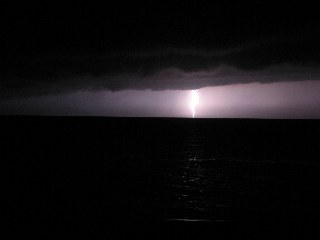Canon PowerShot G2 – Mini-Review.

My sample-gallery has lots of my old G2 photos in it.
I don't want to re-invent the wheel – there are already some excellent G2 reviews on the web. In particular http://www.dpreview.com/reviews/canong2/ by Phil Askey. I don't have the web-space or bandwidth to compete with his full sized samples http://www.dpreview.com/reviews/canong2/page21.asp.
And also .. If you want to know more about canon RAW format I have a new project underway.....Sneak peek.
Six months later.
I had expected this review to be a glowing report of how wonderful the G2 is. It has won it's awards and generally has good reviews. After putting it thru it's paces I regret to report that it has a lot of flaws. It might still be the best value camera in it's class but it certainly is not as "SLR like" as I would like. Some of the problems are fundamental to this type of camera and will most likely be found in other non-pro digi-cams. Some issues are just software - both in the camera and windows bundle. Some are just plain silly hardware design.


Some good things.
They did some some things right. The bottom line is the image image quality is good. I used to say it is as good as film but after re-scanning some film on a better scanner (canoscan FS2710) I'd have to say film is still slightly ahead – for slow film anyway. None the less I've printed my G2 images on 11*19 inch paper and everyone thinks the quality is OK. The swivel LCD is great – when I can see it. Battery life is good and micro-drives are wonderful.
Many bad things.
This page largely points out the camera's bad points – there are plenty of adds and reviews which focus on the good. I've lived with the G2 for 6 months now and taken it places and tried things professional reviewers would not have been able to. Where do I start? Hardware I guess.
Mechanical.
 A
lot of fine engineering went into the G2 but they really screwed
up a few things. In particular the lens cap and lens adaptor
design in stupid. You can't cap the lens unless it is retracted
and you can't use a filter or similar adaptor without screwing on
a lens adaptor. The canon adaptor is an expensive tapered plastic
tube which badly obscures the optical view finder. Fortunately
lensmate
sell a sensible straight adaptor made of aluminum. I bought two.
One to keep looking good and one to hack around – this let
me put another tripod thread in a better position. The little
frog was taken 30 minutes after the adaptors arrived in the mail.
Since they have a 49mm filter thread I was able to reuse my
Olympus OM1 close up adaptor (supplementary lens). The camera is
a little more bulky with the lens adaptor on but I leave it
permanently attached. Anyone want to make an offer on a genuine
canon adaptor :-) Also the focusing light is too weak. The lens
seems fine apart from the aperture only stopping down to f8.
A
lot of fine engineering went into the G2 but they really screwed
up a few things. In particular the lens cap and lens adaptor
design in stupid. You can't cap the lens unless it is retracted
and you can't use a filter or similar adaptor without screwing on
a lens adaptor. The canon adaptor is an expensive tapered plastic
tube which badly obscures the optical view finder. Fortunately
lensmate
sell a sensible straight adaptor made of aluminum. I bought two.
One to keep looking good and one to hack around – this let
me put another tripod thread in a better position. The little
frog was taken 30 minutes after the adaptors arrived in the mail.
Since they have a 49mm filter thread I was able to reuse my
Olympus OM1 close up adaptor (supplementary lens). The camera is
a little more bulky with the lens adaptor on but I leave it
permanently attached. Anyone want to make an offer on a genuine
canon adaptor :-) Also the focusing light is too weak. The lens
seems fine apart from the aperture only stopping down to f8.
Electronics
and Firmware.
 Electronics
and firmware (ie the program in the camera) are so intertwined it
is hard to know what does what. I write embedded software for a
living so I can take some educated guesses but that is all they
are. One major problem is the camera can't "chew gum and
walk". In "computer speak" it doesn't seem to
multi-task. This is the root of many problems. If the camera is
"busy" you go blind and loose control of it.
Electronics
and firmware (ie the program in the camera) are so intertwined it
is hard to know what does what. I write embedded software for a
living so I can take some educated guesses but that is all they
are. One major problem is the camera can't "chew gum and
walk". In "computer speak" it doesn't seem to
multi-task. This is the root of many problems. If the camera is
"busy" you go blind and loose control of it.
Problems
include – The screen freezes during auto-focus (though this
may have an other cause). The screen blanks while writing to the
flash card. The screen blanks while processing "hot pixels"
in time-exposures. As well as the screen blanking you loose
control of the camera. For example you can't use the zoom till
the camera is ready.
When taking photos of the this storm many
good lightning strikes were missed because the camera was not
ready. The exposures were 15 seconds followed by an even longer
time when the camera tries to remove hot pixels (this should be
optional!). Even when I knew the shot was no good I could not
abort it and had to wait till the camera was ready again.
Autofocus is slow and unreliable.
 There
is a serious problem with the autofocus – I believe this is
common for this class of camera. The camera almost certainly uses
the main CCD to sense focus. It might be possible to improve the
performance but it may already be optimal for this type of
system. Fixing the problem would probably mean a making a larger,
more complex camera which would mean a higher price. The fact
remains though that the AF sux. It is just too slow and
unreliable. If the AF worked better the need for a true SLR would
be reduced. This is the best flying bird shot I've gotten and it
isn't very good. I've had many birds nicely framed in the optical
view finder and the camera just won't fire. When it finally does
the bird is gone or has flown into a different light and the
exposure is bad. If you knew exactly what the bird will do you
could pre-focus but it all gets very difficult. Don't buy a G2
for action work – even if the action is a crawling bug. I
also have lots on blurry photos of sand where a baby turtle
should have been. It's very very difficult.
There
is a serious problem with the autofocus – I believe this is
common for this class of camera. The camera almost certainly uses
the main CCD to sense focus. It might be possible to improve the
performance but it may already be optimal for this type of
system. Fixing the problem would probably mean a making a larger,
more complex camera which would mean a higher price. The fact
remains though that the AF sux. It is just too slow and
unreliable. If the AF worked better the need for a true SLR would
be reduced. This is the best flying bird shot I've gotten and it
isn't very good. I've had many birds nicely framed in the optical
view finder and the camera just won't fire. When it finally does
the bird is gone or has flown into a different light and the
exposure is bad. If you knew exactly what the bird will do you
could pre-focus but it all gets very difficult. Don't buy a G2
for action work – even if the action is a crawling bug. I
also have lots on blurry photos of sand where a baby turtle
should have been. It's very very difficult.
Manual focus is very difficult.
 With
a real (SLR) camera you can always switch to manual focus when
the AF can't hack it. The G2 manual focus is almost impossible to
use. The Multifunction Button is no substitute for a focusing
ring and the LCD is no substitute for a focusing screen. Even if
you manage to push all the buttons and view the enlarged centre
window on the LCD – you just can't see what you have. I
actually find it easier to focus by moving the camera –
which is less than ideal. I took 24 shots of this Hoby dragon to
get 2 reasonable ones. I would probably have moved the focus back
a few millimeters if I could have seen better. I also took a
couple of photos it with an SLR. The SLR was a pleasure to use
for "normal" shots but not for these down in the dirt
style photos I like to take. It would be interesting to see if a
personal video system (eyephone) plugged into the video output
would make it easier.
With
a real (SLR) camera you can always switch to manual focus when
the AF can't hack it. The G2 manual focus is almost impossible to
use. The Multifunction Button is no substitute for a focusing
ring and the LCD is no substitute for a focusing screen. Even if
you manage to push all the buttons and view the enlarged centre
window on the LCD – you just can't see what you have. I
actually find it easier to focus by moving the camera –
which is less than ideal. I took 24 shots of this Hoby dragon to
get 2 reasonable ones. I would probably have moved the focus back
a few millimeters if I could have seen better. I also took a
couple of photos it with an SLR. The SLR was a pleasure to use
for "normal" shots but not for these down in the dirt
style photos I like to take. It would be interesting to see if a
personal video system (eyephone) plugged into the video output
would make it easier.
You can
not see the focus results in-camera.
The G2 lets you magnify a photo you have taken. However all this does is enlarge the thumbnail - it does not show you the detail in the image stored on the flash card. This makes it impossible to know whether to re-shoot the image (if possible) unless it is really bad. This is extremely slack - by the time you know the image is bad it is too late to do anything about it. Decompressing the saved image might take some extra code in the firmware, use some battery power and take time – but it is essential. It could substantially reduce my storage requirements if I could delete the dud photos immediately.
The
firmware could be better.
I would have done things differently. Perhaps one day a camera maker will be enlightened enough to release an open source user interface so some 3'rd party programmers can fix it. The G2 GUI should be more orthogonal (consistent) and user definable. For example the "mode sub-dial" has some 12 setting on it. The movie mode is an exception but of the remaining 11 – seven are pretty much useless to me because they do not allow the use of "raw" mode. There is no good reason to restrict the use of raw mode – it should up to me what format I want to use. All the settings on the mode dial could be identical and user definable. The factory defaults could make them do exactly what they do now but the users could change them to suite themselves. You would probably restrict this power to advanced users (who read the manual to find the password) and have a simple way to restore the defaults (worst case you pull the button cell out). There are a few thing I would add - like to time-lapse mode. I would also optionally remove the delays and flashing focus light from the remote control code. Fixing hardware problems can be expensive and impractical but fixing firmware is relatively cheap. I would also allow the user to map out hot pixels. I have a hot pixel and don't want to send the camera away for weeks to add one number to the camera's mapping table.
Throw away the canon windows programs.
Keep photoshop but that's all. The canon images downloading and conversion program are very poor. Fortunately there are good 3'rd party products to replace them. Unfortunately it costs money to buy what canon should have supplied in the first place. I use breeze-browser by Chris Breeze to do my RAW to jpeg/tiff conversion – it is shareware and costs $35US to register. I also use his free USB downloader to get the photos out of the camera. These programs are streets ahead of the canon code.

The G2 lets you use the USB remote control to capture time-lapse sequences. This is very limiting in needing a PC and also you loose control of focus and other features. I got around this by reverse engineering the IR remote and building a circuit to send the "fire" code to the camera at predefined intervals.
I also have a site devoted to Time-lapse Photography using the G2 - This site is pretty much abandoned because I have too many other things to do.
 The
movie mode has its uses. The quality is poor, length is limited
and the is no exposure, zoom or focus control during the take but
it is basically a free extra. What I would love is a sound only
mode with unlimited record time.
The
movie mode has its uses. The quality is poor, length is limited
and the is no exposure, zoom or focus control during the take but
it is basically a free extra. What I would love is a sound only
mode with unlimited record time.
I often put select lo-res
mode just to record sound. This is an clip I took at the Woodford
folk festival. It is of an amazing local singer/guitarist named
John Malcolm the
clip is 5 meg long and requires the Quicktime player.
I've
stripped out the audio from this clip in
AVI format. It player in windows media player as well as QT.
It is hard to describe the sound of wedge tailed shearwaters (mutton birds). I used the camera to recorded this audio from my hammock one dark night on Lady Musgrave Island.